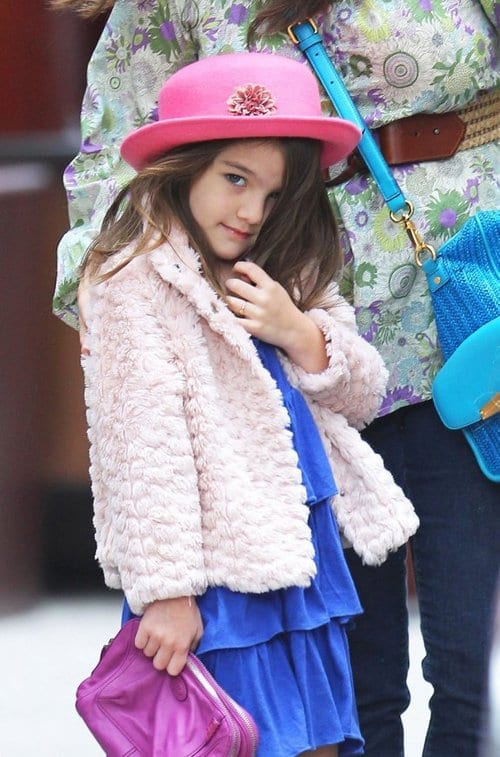While they are called the “terrible twos,” childhood tantrums start at about the age of two years old but typically continue until four years of age. Older children may also throw tantrums, but they should be rarer and easier for them to recover from. Tantrums are common at two because children learn to press boundaries at this age and have trouble expressing themselves and maintaining emotional control when they do. Instead, they may erupt into frustration and feeling, unable to control themselves. As they develop verbal skills and emotional control, these behaviors subside.
While tantrums are natural, they can be very frustrating and embarrassing for a parent. Often when a child is having a temper tantrum, they’re tired, hungry, upset, or in public. These circumstances can make it even more challenging for a parent to respond to a temper tantrum in a way that helps their child grow, rather than simply stifling or escalating the behavior. However, having a plan in place can help make the terrible twos more manageable. There are ways to avoid temper tantrums and ways to handle them once they have already started. We’ll go over both.
Ways to Avoid Temper Tantrums
Inevitably, your child will have many temper tantrums. However, there are ways that you can reduce the number of tantrums that they have.
1. Routine
Toddlers rely on routine to have a sense of control over what happens during the day. The more you can stick to routine, the more your toddler will be comforted, and the fewer opportunities they will have for a tantrum. For example, if your child is expecting a bedtime story, but you don’t provide it, then this is an opportunity for them to have a tantrum, as they try to exercise control to return to the norm.
Of course, you will inevitably break routine, it’s impossible not to! Try to warn your child about routine changes beforehand and provide comfort about them. Remember, they can be much more disturbing to children than they are to adults.
2. Fulfill Needs
Like adults, children will lose control easily if their basic needs are not met. You get frustrated more easily if you are hungry, tired, or hot. Toddlers are even more influenced by these unfulfilled needs and will be more likely to have a tantrum when they are dealing with them. Especially when you’re approaching a trigger, like a change in routine or trip to a store, having their needs fulfilled ahead of time is important.
3. Allow Choices
It may sound odd from our adult perspective, but exercising some control is a need that toddlers are developing and expressing. Giving your child some outlets for choice is important to help them feel like they have developed some independence and can control their environment to some degree. Age-appropriate choices might include the option of which shirt to wear, which snack to have, which show to watch or which game to play. Present two options, so your child does not get overwhelmed.
4. Praise Calmness
Some children realize that throwing tantrums gets them a great deal of attention that they otherwise cannot get. So, it is important to show your child attention and give them praise when they are not throwing a tantrum. Take a moment during phone calls, dinners, or other times where you would typically be occupied and less available to your child to praise them for good behavior. This demonstrates to them that they can get your attention through positive actions.
5. Avoid Triggers
Once your child has thrown a few tantrums, you’ll start to notice what specifically triggers them. Maybe it’s seeing candy in the grocery store, having to share a certain toy, or the bedtime routine. Whatever it is, you can help your child avoid these triggers until they learn to better communicate their needs and express their emotions in healthy ways. Of course, tantrums will still happen, and they are important experiences, but lowering the overall number can give you a break.
Ways to Handle Temper Tantrums
Despite your best efforts, your child has started a temper tantrum. This is bound to happen, and your response to the tantrum can really help your child grow as a person. Here are ways to handle your child’s temper tantrums.
1. Timeouts
Timeouts are a good option when the temper tantrum is paired with bad behavior. Perhaps as a result of their overwhelmed feeling, your child has hit someone, broken something, or acted negatively. Then a short timeout can help them regain composure and better understand their behavior. These timeouts should end when the tantrum ends. Follow-up with a quick conversation about how your child can appropriately express their feelings.
2. Distraction
For temper tantrums that haven’t resulted in bad behavior, distraction is an excellent technique. Your child will learn to self-soothe in time but offering them distractions for now can help them. They’ll learn to move onto thinking about more positive things and learn what kind of things they can turn to in order to calm themselves down. Here are a few things you can distract them with:
- A favorite toy
- A pet or a person
- Media, like television or Youtube
- Lunch, snacks, drinks
- A bath, or other part of their routine
It is important to not turn to one kind of thing too often. For example, if you give your child a cookie every time you try to distract them, they learn to handle emotions with cookies. It isn’t bad to offer your child their snack to help diffuse a tantrum but try not to let any one thing become a habit.
3. Don’t Reward Whining and Begging
It can be hard to distinguish between a tantrum and manipulative behavior. At this age, children are learning that they can pretend to feel a certain way and end up getting what they want. It is perfectly natural for your child to explore deception, but you should avoid giving into it. Don’t give your child the object they are throwing a tantrum over if they whine and beg. If they instead control their emotions and express themselves with words, you can then give them the object they are having a tantrum over.
4. Model Good Behavior
If you happen to struggle with anger issues or some kind of emotional management, then you may find that your child’s tantrums bring up a lot of feelings for you. You may relate to their outbursts better than other parents, but you might also struggle to model the good behavior your child needs to see to learn to handle their own feelings. This is a good opportunity to reach out to other people and supports in your life to help you manage your feelings and ensure you’re modelling the best behavior you can. In fact, even having conversations about how you struggle to handle these feelings sometimes can help you child learn great communication skills and know that they aren’t alone.
5. Affirm Feelings
It can be hard, as an adult, to remember how different certain situations felt a s a child. You may think that some of the things your child has a tantrum over are trivial, like a lost toy, missing out on their favorite meal, or skipping reading time. Try to remember, as much as you can, that your child’s world is much smaller than yours, and these things they have a tantrum about are as important to them as the major things in your life are to you. It is important to empathize with your child and their feelings before you correct their behavior. That way they learn to handle their feelings better.





Leave a Comment